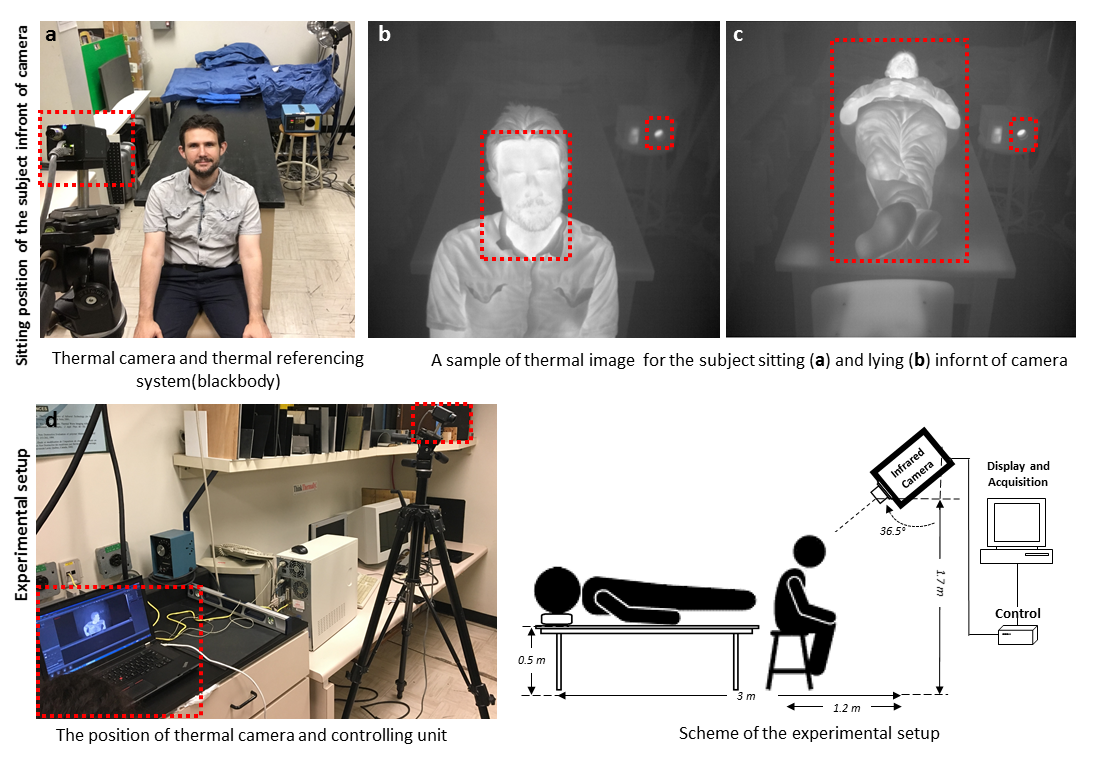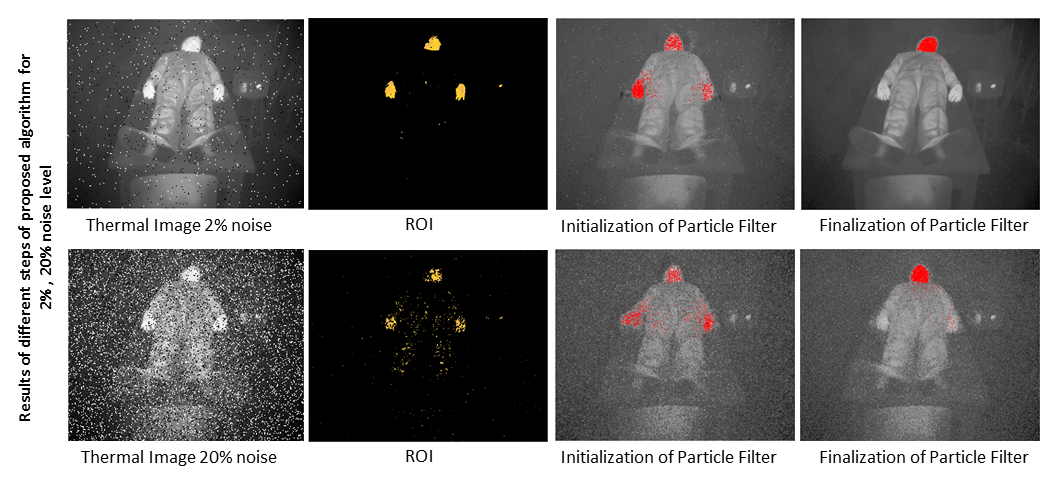Human Thermal Monitoring Database
Thermal image database for monitoring of body temperature is available for research uses. A sample set of this database is provided at the following link. This research work has been presented in Advanced Infrared Technology and Applications (AITA 2017).

Quick access
Thermal Monitoring of Human Body using Incremental Low Rank Noise reduction Property of the database Sample sequence images Download the database BibTeX Related publications Contact
Thermal Monitoring of Human Body using Incremental Low Rank Noise reduction
Incremental Low Rank Noise Reduction for Thermal Monitoring of Human Body Using Infrared Imagery
Thermal imagery for monitoring of body temperature provides a powerful tool to decrease the risk (e.g. of infection) for intensive care patients. It is created by traditional thermal measurement and involves many relevant researches in the field of thermography. The presented approach addresses an experiment to simulate the hospital’s condition for the patients along with an automatic monitoring system for patient’s temperature. The monitoring system uses an incremental low-rank noise reduction applying Incremental Singular Value Decomposition (SVD) and applies color based clustering for initialization of the Region of Interest (ROI) boundary. Then a particle filter tracks the ROI(s) for entire thermal stream (video sequence). The conducted thermal database contains 15 subjects in sitting and lying positions in front of camera and it is created to verify the robustness of our method facing motion-artifacts and in the presence of noise (2%-20% - Salt and pepper noise). The proposed approach has been tested and could track the ROI continuously and correctly, and provided considerable robustness against noise and motions, which shows the promising performance and demonstrated a confirmation for the outlined properties.
UP
Property of the database
Property of the database
The experiments were conducted in the room temperature using A65 FLIR camera for the infrared images acquisition at the wavelength (7.5µm - 13µm). The resolution of the IR-camera was 640×512 pixels with the Field of View (FOV) of 45° (H) ×37° (V) where the focal length were 13mm. This provides 1.31mrad Spatial resolution (IFOV). Image frequency of the camera capable to reach 9Hz but it set to have 1 second interval time between the frames to avoid high computational complexity. The object temperature range can be varied from -40°C to +160°C. During the experiment the subjects were sitting in 1.2m and lying at 3m distance in front of the camera. The camera located at 1.7m from the ground having 36.5° from the vertical axe. Figure 1 shows the schematic experimental setup along with two examples from thermal images. The thermal image database created by 15 subjects for two minutes acquisition while the subjects are sitting or lying in front of the camera. The subjects were free to have arbitrary movements during the acquisition to not only simulate the actual condition but also to verify the ability of the system against motion artifact. The process has been done with a PC (Intel(R) Core(TM) i7 CPU, 930, 2.80GHz, RAM 24.00GB, 64 bit Operating System) and processing of thermal data has been conducted using MATLAB computer program.

UP
Sample sequence images
Please click here to download the sample images of this database.
UP
BibTeX
@inproceedings{YousefiEtAl2017, title={Incremental Low Rank Noise Reduction for Thermal Monitoring of Human Body Using Infrared Imagery}, author={Yousefi, Bardia and Memarzadeh Sharifipour, Hossein and Eskandari, Mana and Ibarra Castanedo, Clemente and P V Maldague,Xavier and Laurendeau, Denis}, booktitle={Advanced Infrared Technology and Applications - AITA 2017}, pages={}, year={2017}, }
UP
Related publications
Automated assessment and tracking of human body thermal variations using unsupervised clustering Applied optics 2016, 55(34), D162-D172.
Unsupervised Automatic tracking of Human Body Thermal changes Advanced Infrared Technology and Applications (AITA - 2015) (Pisa, Italy). PPTX Full Paper download
UP
Contact
Bardia Yousefi bardia.yousefi.1@ulaval.ca
Xavier P V Maldague Xavier.Maldague@gel.ulaval.ca
UP